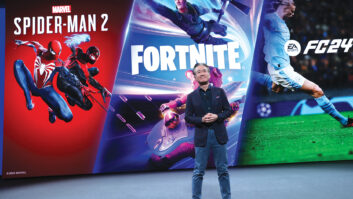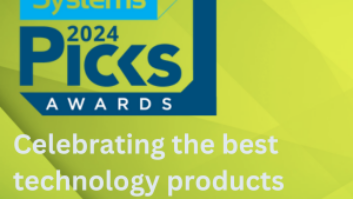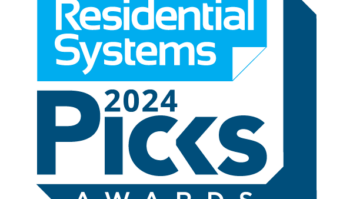The International Consumer Electronics show held in Las Vegas last month attracted greater than 170,000 attendees from more than 150 countries. There were about 3,800 exhibitors, of which more than 500 were in the Eureka Park marketplace alone–a marketplace that has become a showcase for emerging crowd-funded companies. It’s impossible to cover over 2.5 million square feet of exhibit space in three days, but I did my best to find the companies and technologies that I felt would have the greatest influence on CEDIA custom electronics professionals over the next 12 months. Here’s my top-seven list of companies and products to watch for in 2016.

LG promoted the beauty of OLED TVs with this exhibit at CES 2016.
1. Vayyar Image Sensing
Vayyar sensors look into objects using technology that breaks through barriers (such as sheetrock) and brings sophisticated imaging to your smartphone. The chip this Israeli company has developed can read information from low-power radio transmissions, scanning an object for a fraction of a second. At CES it demonstrated how its technology can “see through” a sheetrock wall to show the exact location and direction of pipes, wiring, and studs. This product is scheduled for release in the second quarter of 2016 for less than $500. What electronic systems contractor would not want one of these “superman vision” testers in every truck?
2. DISH Network’s Product Lineup
DISH is proving that it takes the TV viewing needs of our clients seriously. Its new Hopper and Joey lineup of products included a settop box that hosts 16 tuners, a 2 TB hard drive, and up to six satellite Joeys that can all can render 4K content. In addition, its set-top boxes all support quad-screen viewing. Four tuners (showing four football games at once, for example) can be displayed on one large TV screen. And with 16 tuners in the main Hopper box, there are still plenty of tuners left over for other rooms or recording. In addition, its Hopper box includes Sling Media capabilities for remote TV viewing.
Perhaps the most interesting product was its smallest product announcement: the HopperGO. About half the size of an iPhone, this 64 GB hard drive plugs into the Hopper’s USB port, so that users can download shows with no DRM restrictions and then watch them on the go. It’s a perfect solution for watching movies or sports programs from your iOS or Android device on a plane. All of these products should ship in the second quarter of 2016.
3. LG 4K OLED TVs
It’s not hard to be impressed when you are looking at the thinnest, most spectacular TV ever produced. But we have all been impressed by OLED technology over the years until we looked at the price point. Even for our affluent clients, OLED in a large viewing format was prohibitively expensive. That will change when LG releases its 77-and 65-inch OLED TVs later this year for less than $10,000.
4. Fibaro Home Intelligence
A home technology company from Poland was showcasing its Z-wave-based “Swipe the Magic” solution. A harbinger of gesture-based home control solutions, Fibaro was demonstrating how waving your hand back and forth in front of a picture frame that housed a gesture sensor could raise and lower the volume of a Sonos Play 1. Expect to see gesture control from companies like Fibaro to become a more common natural user interface for our clients in 2016.

All of DISH’s new set-top boxes support quad-screen viewing
5. Ecovent and Big Ass Fans
The enormous success of Nest has proven that well-designed, intelligent home comfort products have great appeal to our clients. But affluent clients often have very large homes and high ceilings, and a Nest thermostat doesn’t do anything for properly distributing the flow of heat or air conditioning to the various rooms of their homes. In these existing homes, introducing intelligent, smartphone-controlled vents from Ecovent and Haiku fans from Big Ass Fans can make a huge difference in their overall comfort and reduce heating and AC bills. Both of these products are already shipping.
6. Roost and ADT Canopy
A new startup in Sunnyvale, CA has introduced an intelligent 9-volt battery for existing smoke alarms. With this new battery, you can be notified when you battery is running low, contact your smartphone when an alarm sounds, and send emergency alerts to friends and family. But perhaps the most interesting feature of this intelligent battery company is the relationship this company has built with ADT. ADT’s new fire and police monitoring service, called Canopy (to be released this year) will read the cloud-based IoT information from companies like Roost and dispatch the appropriate emergency responses as needed. There is no need to purchase ADT’s security system for this service, just a subscription to its new ADT Canopy program (pricing yet to be announced). ADT is also providing professional emergency response service for several of the IoT products that we are currently installing in our clients’ homes, such as Nest and August Door Locks.
7. Anderson Windows and Doors VeriLock Sensors
In a world where everything in the home is getting smarter, you can easily understand how every major manufacturer of home-building products is reviewing its product lineup to determine how it can best participate in the IoT home. Anderson is no exception, and it showcased its CES Award-winning Verilock Sensors on its windows and doors that can send a signal to a smartphone, alerting a homeowner when a window or door is closed in real time.
There was also a promising new Ihiji-like product from a U.K. company called Domotz, which was showcasing its remote networking management software running on a Synology drive or a Rasperry Pi that would only cost its clients $2.99 per month. And Tablo was demonstrating its new Apple TV 4 app with an Over the Air Antenna program guide. From this guide, users can record up to four OTA signals on network-attached storage for playback to any smartphone or tablet. Lastly, a new start-up from Paris, France, called D-Vine was demonstrating an intelligent wine dispensing system that allows anyone to pour a sommelier-approved, temperature-controlled, and aerated glass of red or white wine. It’s a perfect way to toast what promises to be a very exciting year for the home technology professional.







